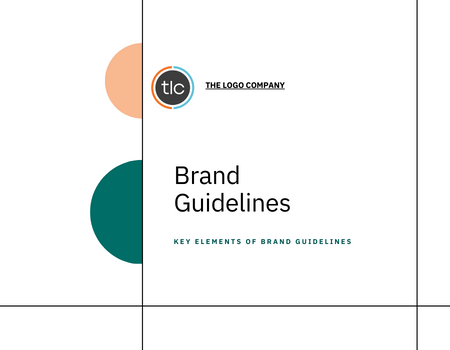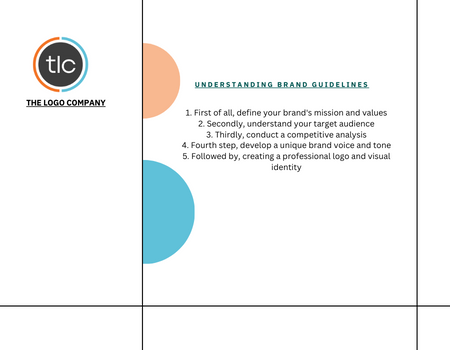Are they really important, brand guidelines? What are they? First of all, the answer is yes they are very very important. Secondly, brand guidelines are something you must use and have in place to create a strong and vivid brand. A company that is memorable and easy to recognize.
In this article, I will try show you what you need to focus on when it comes to brand guidelines. There are some common mistakes that you can avoid and some things you need to keep an eye on. Hopefully, you will have a clearer picture on what they are once you have gotten into it.

Below you can find the topics that will be discussed:
- 1. The Importance of Brand Guidelines
2. Understanding Brand Guides
3. Creating a Comprehensive Branding Guide
4. Key Elements
5. Benefits of Following Branding Guidelines
6. Common Mistakes to Avoid - 7. Examples of Companies with Strong Brand Guidelines
8. Updating and Maintaining
The Importance of Brand Guidelines
In the question of how important they are the answer is VERY. After all, brand guidelines are a key element in creating a strong and recognizable brand. Pretty much everything really.
Furthermore, guidelines allow you to make sure that you have consistency across all communications, from logo usage to messaging. More so also helps build trust with customers and foster brand loyalty.
For instance, the brand guidelines should outline the brand’s visual identity, typography, color palette, tone of voice, and more. In itself this adds to your customer understanding your product or the service that you are trying to sell.
Actually, if you think about it, brand guidelines also facilitate a smoother creative process, saving time and resources. Just because they act as a reference point for designers, marketers, and other professionals when creating new content and collateral. This consistency not only saves time but also creates a cohesive brand image that is memorable and impactful.
Moreover, brand guidelines provide protection for the brand. By defining what is and isn’t acceptable usage of the brand, the guidelines help prevent unauthorized use. Even misinterpretation, or dilution of the brand. All to try to avoid legal issues, loss of credibility, and even, loss of business and customers.
Understanding Brand Guides
What is there to understand when it comes to brand guides? Well, brand guidelines are essential resources for businesses seeking to establish a consistent and recognizable brand identity. Read this master paper by Lunds University on brand identity and the influence of brand image. It’s a bit like having a map and following it. You won’t get to the end result of you are not consistent in moving in the right direction.
Therefore, to better understand brand guides, it is important to first familiarize yourself with the elements that comprise them. For example:
- brand voice,
- tone
- color palette
- typography
Additionally, it is important to understand the purpose of a brand guide. For who and why are you having one? To ensure that you fully comprehend a brand guide, take the time to study it carefully and seek feedback from colleagues or friends. It is also important to stick to the guidelines set to avoid making any creative decisions that changes the path from the established standards. Believe me it’s easily done once you are influenced by others.
Creating a Comprehensive Branding Guide
Here comes 10 bullet points into how to actually best create a guide for your needs.
1. First of all, define your brand’s mission and values
2. Secondly, understand your target audience
3. Thirdly, conduct a competitive analysis
4. Fourth step, develop a unique brand voice and tone
5. Followed by, creating a professional logo and visual identity
6. Make sure you establish brand guidelines for typography, colors, and imagery.
7. Also important to craft messaging guidelines for consistent communication.
8. Implement brand standards across all channels
9. Continuously monitor and update your brand strategy
10. Lastly, train employees on brand guidelines and messaging.So you are all on the same page.
Understandably, creating a comprehensive branding guide involves several key steps. Not only the 10 mentioned above. However, one of the last steps is to document your brand story, values, mission, and personality to guide your brand messaging. Unfortunately, this is often overlooked and if it’s not well reported and saved somewhere then people, like your employees will forget what they are working towards. Leading to inconsistency in your brand strategy.
More importantly, always review and update the guidelines as necessary to develop with your company.

Key Elements in Brand Specification Guidelines
So, what are the brand specification guidelines? Well, its a crucial tool for ensuring consistent communication and visual identity across all platforms and advertising materials. By knowing the key elements such as logos with slogan, colors, typography, and tone of voice, a brand can establish a strong identity.
Furthermore, colors should be chosen carefully to evoke the desired emotional response and create brand recognition. Read the color emotion guide that we created for a better guide on colors.
Typography and font deconstruction should be consistent and legible across all platforms.
Finally, tone of voice should reflect the brand personality and values. Who and what you are. By following these key elements, a brand can create a strong and cohesive brand story that will resonate with audiences and ensure consistency across all marketing channels.
Benefits of Following Branding Guidelines
In short, if you follow your branding guidelines then numerous benefits will come true for your businesses. More or less crucial for attracting and retaining customers. and stay in business. You will build a relationship of trust with your customers and they will see you in one way, with one message. Using the same colors and typography all over your advertising campaigns.
Moreover, having set guidelines in place can help your businesses to develop your marketing campaign wisely. Its easier to see the goal once you have a brand kit with guidelines to follow.
Above all, if you follow branding guidelines accurately, can also help differentiate your businesses from your competitors. The market is usually crowded. So, by developing a unique brand personality and visual identity, businesses can connect with customers on a deeper level and create a lasting impression that sets them apart from similar brands.
You might not think this is a benefit of following guideline but by following rules can help to save time and resources. This is done by providing a clear roadmap for marketing and design teams to follow. You cleverly, eliminate guesswork and inconsistency. Leaves you a lot more time to focus on achieving success.
Examples of Companies with Strong Brand Guidelines
Many companies understand that having a strong brand identity is important for business success. More so they understand that by creating branding guidelines can help with consistency and communicate the values of the brand.
If we have to take some examples of companies with well established branding guidelines then I must include Apple, PepsiCo, and Nike.
Apple’s guidelines prioritize simplicity and clean design, while PepsiCo emphasizes a sense of youthful energy and fun. Pepsi has recently re-branded but are still following the same rules as before. Consistently, every time. Another example, Nike’s focues on empowering their customers through their products.
Common Mistakes to Avoid
Now we come to the mistakes that you can avoid if you know which one they are. I will mention the 5 below that I feel are the easiest to make right.
1. Inconsistency in visual elements – make sure you check again and that everyone is working on the same elements
2. Lack of clarity in messaging – slogans and target audience needs to be clear.
3. Overcomplicating design elements – make it simple and understandable.
4. Failure to update guidelines regularly – Stay focused and follow the trends.
5. Ignoring audience considerations – test your target audience and keywords regularly.
By avoiding these common mistakes you are on your way in creating a good solid brand that people will like. makemak sure you stay ethical and follow the rule
Updating and Maintaining
To talk a bit more as to why updating and maintaining is important. You must understand that the world changes all the time. Therefore, a branding guide is a critical tool for companies of all sizes. With the clock turning, brands constantly evolve and change. Understandably, your branding guide should be updated to reflect these changes.
Therefore, regularly reviewing your branding guide ensures that it remains relevant and not out of date. As the world changes, your brand should stay current.
Everyone today needs to consider the impact of new technologies. Like for example, social media, and cultural trends on your brand. Maintenance is your key to keeping your branding guide up-to-date and useful. Basically, regularly reviewing and updating your branding guide will ensure that it remains an essential tool for your company’s success.
Wrapping Up
In summary, brand guidelines help create a strong brand identity, foster brand loyalty, save time and resources, and protect the brand. Above all, do remember that they are an essential tool for any business hoping to establish a unique and impactful brand.
Another important aspect is that brand guidelines 101 are critical in reference for maintaining consistency in the visual elements of your company. Another way of making sure that a company has a united voice and style. One that everyone will know.
Last few words, a brand guide is a powerful tool that can help you build a strong, remembered business, therefore take the time to understand more and use your new found knowledge to its fullest potential. Go on, you have nothing to loose.
